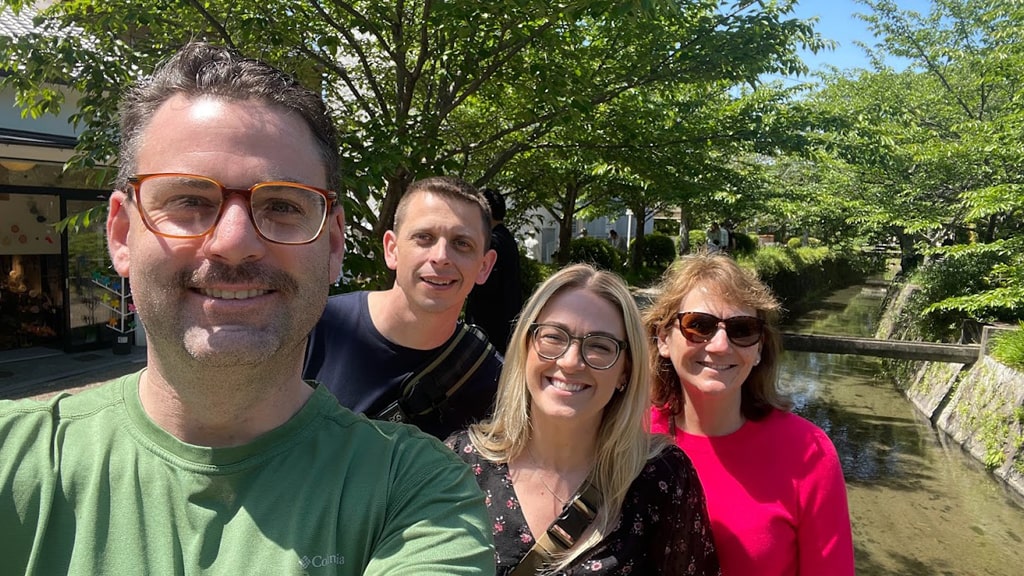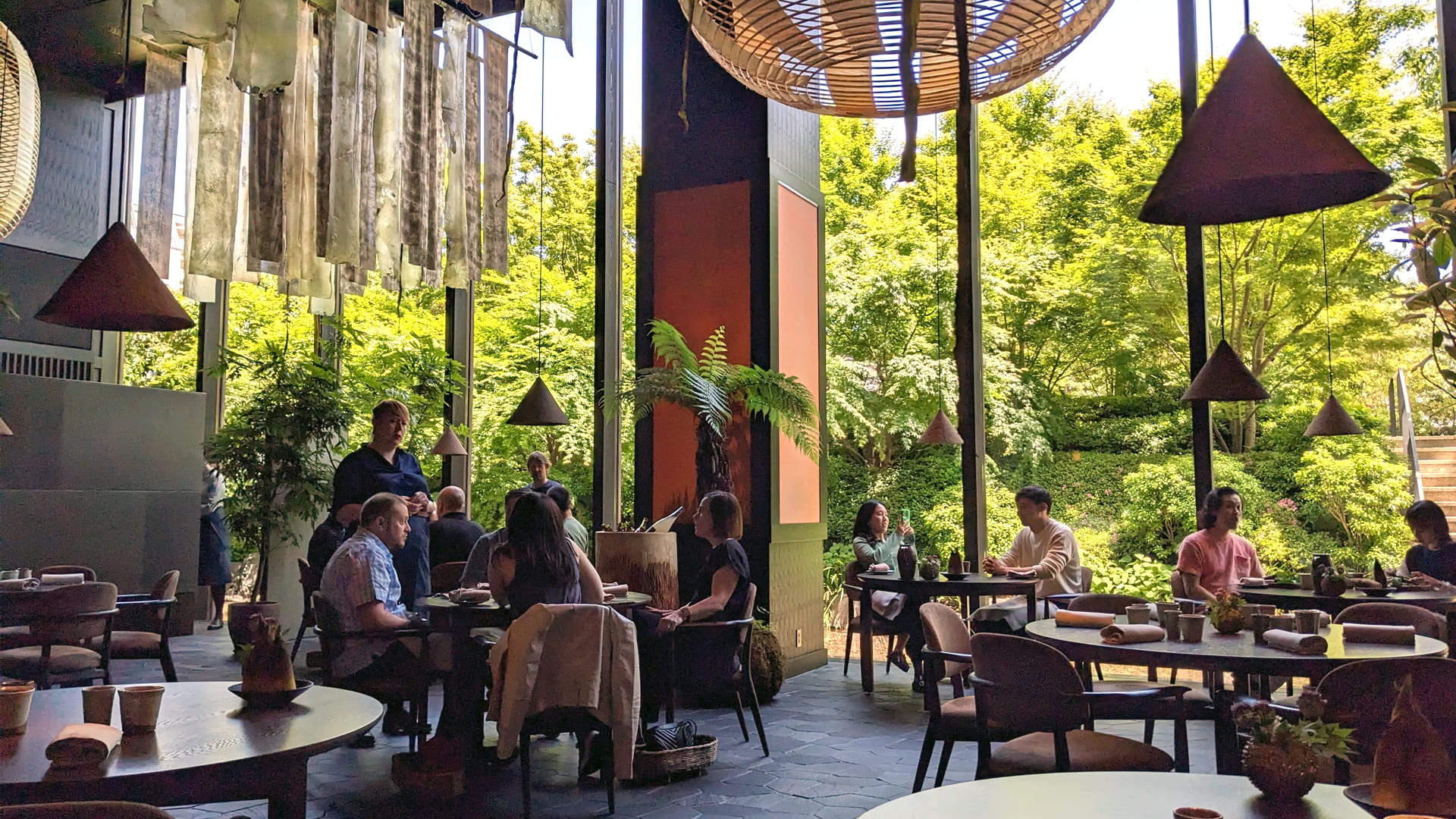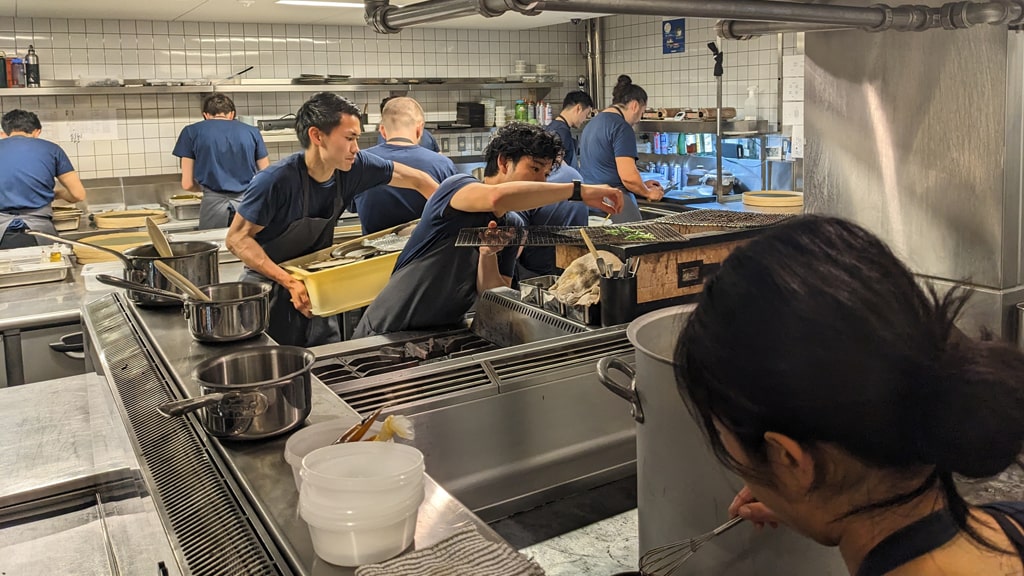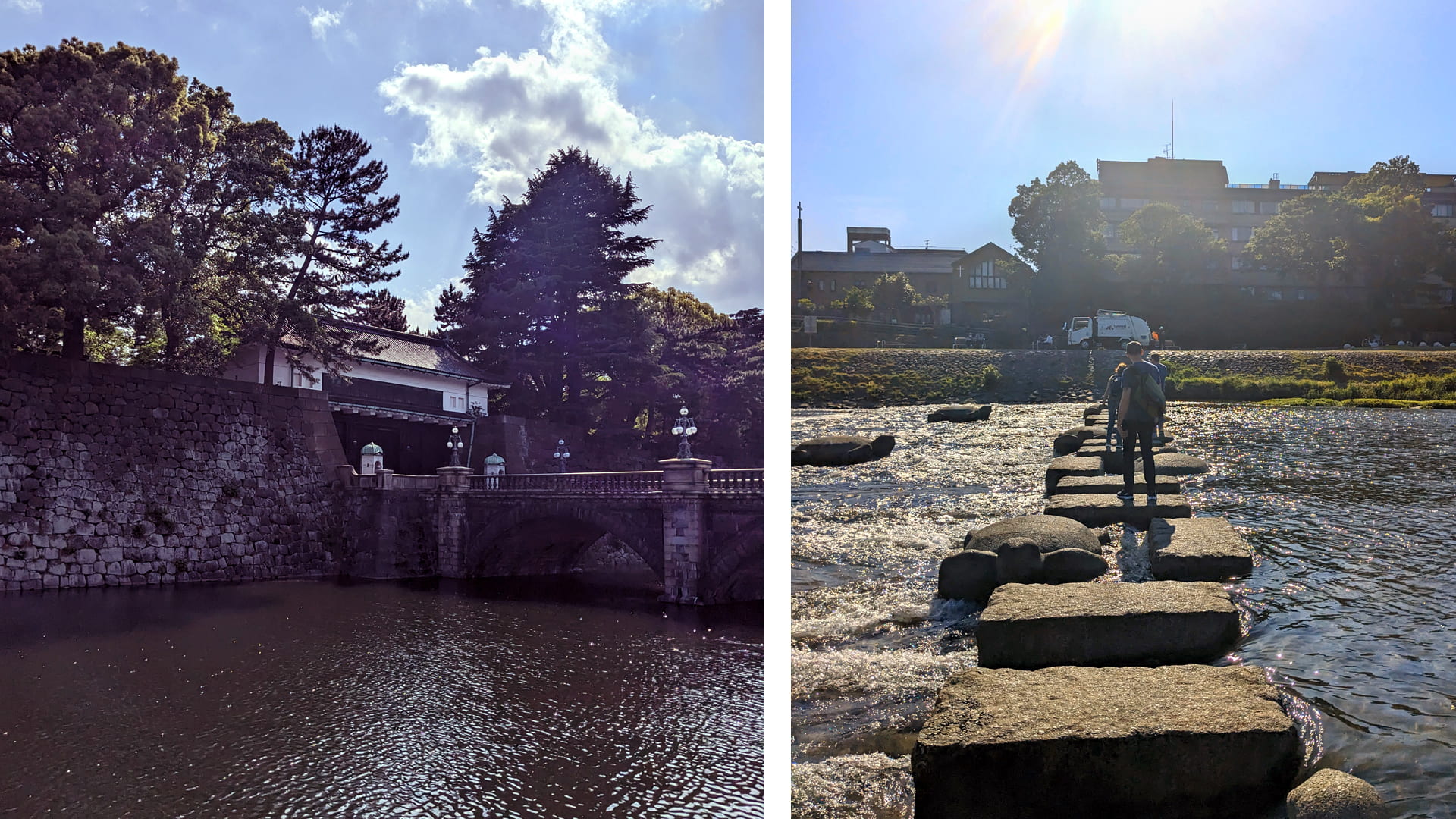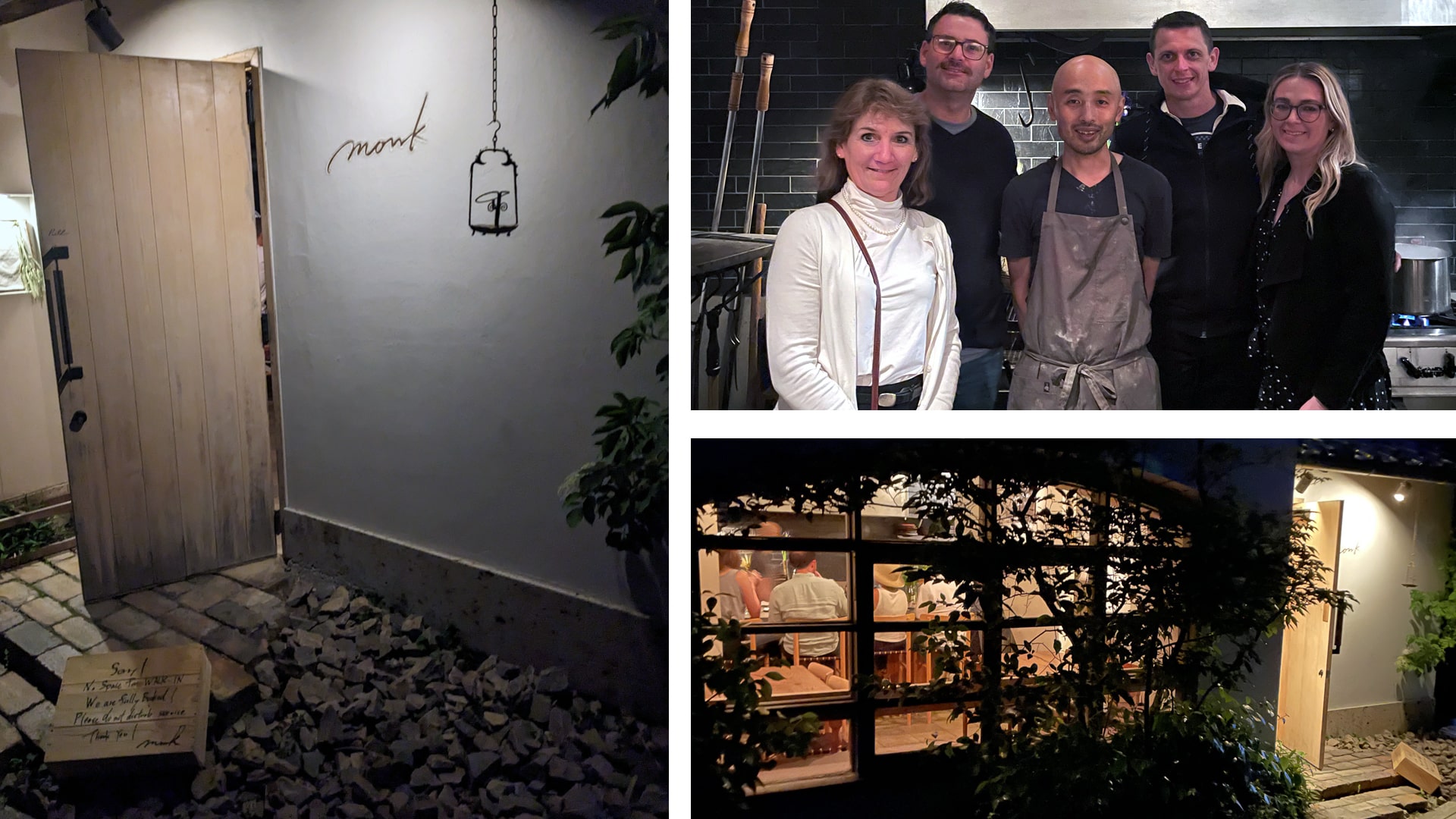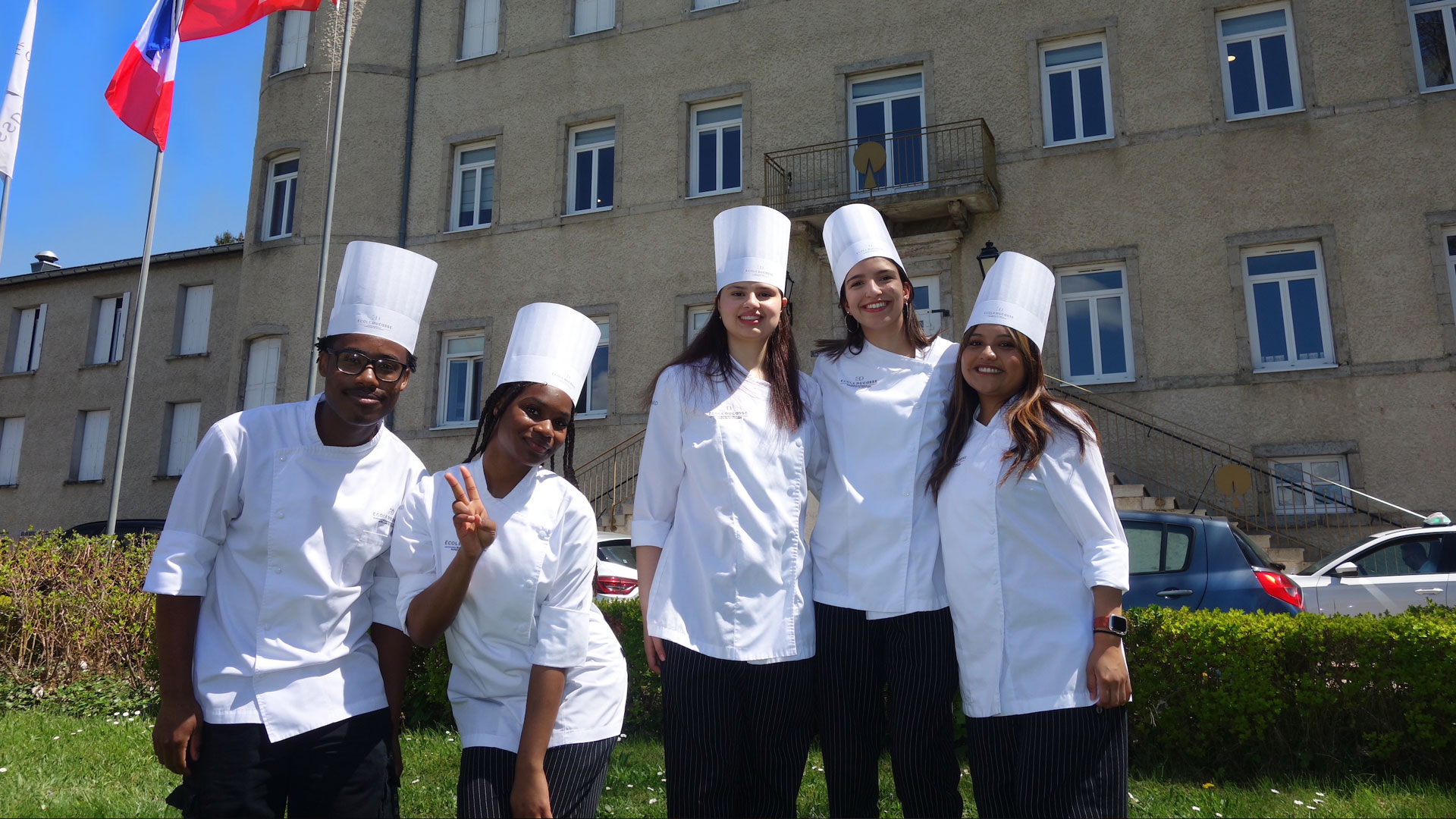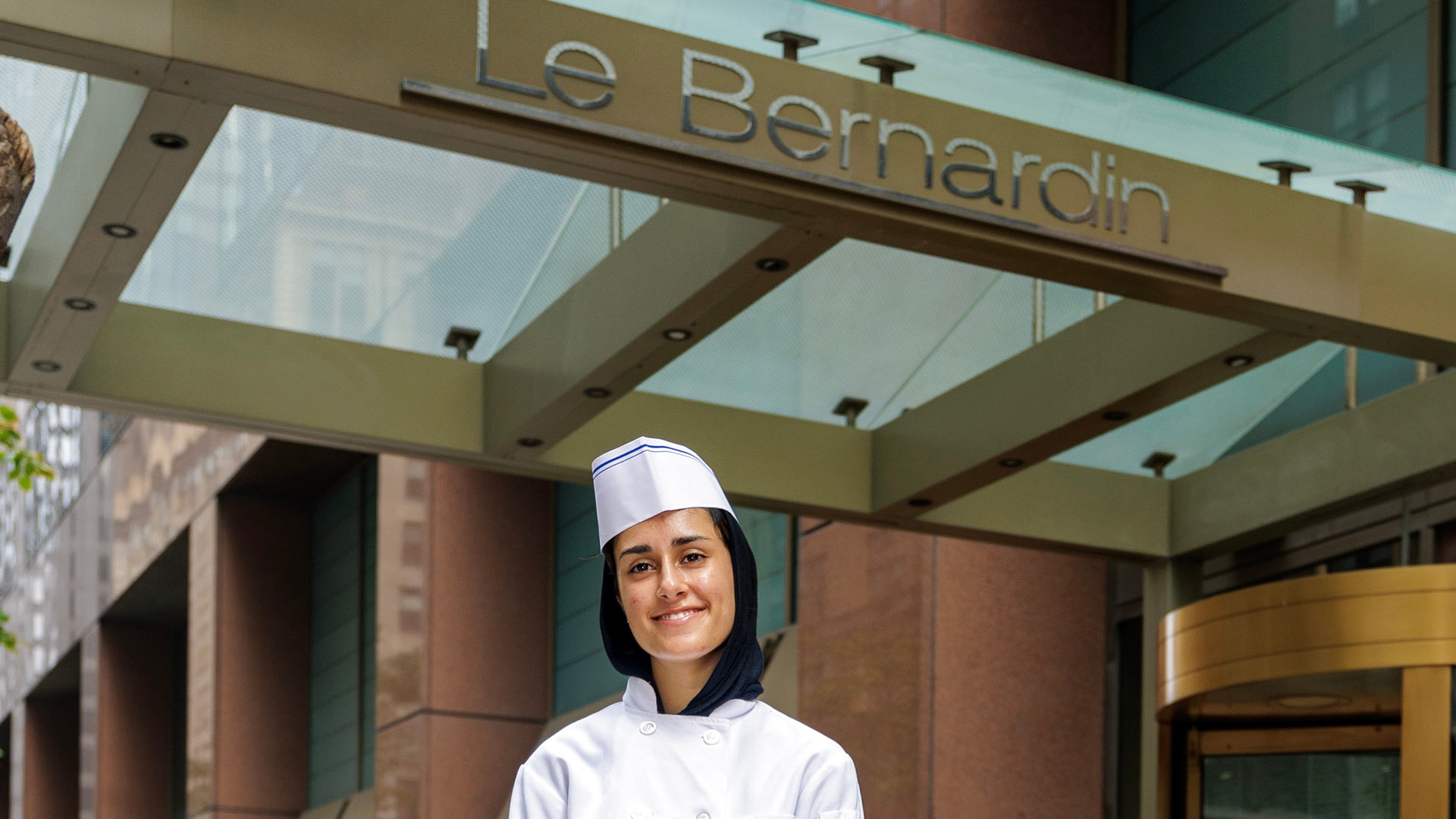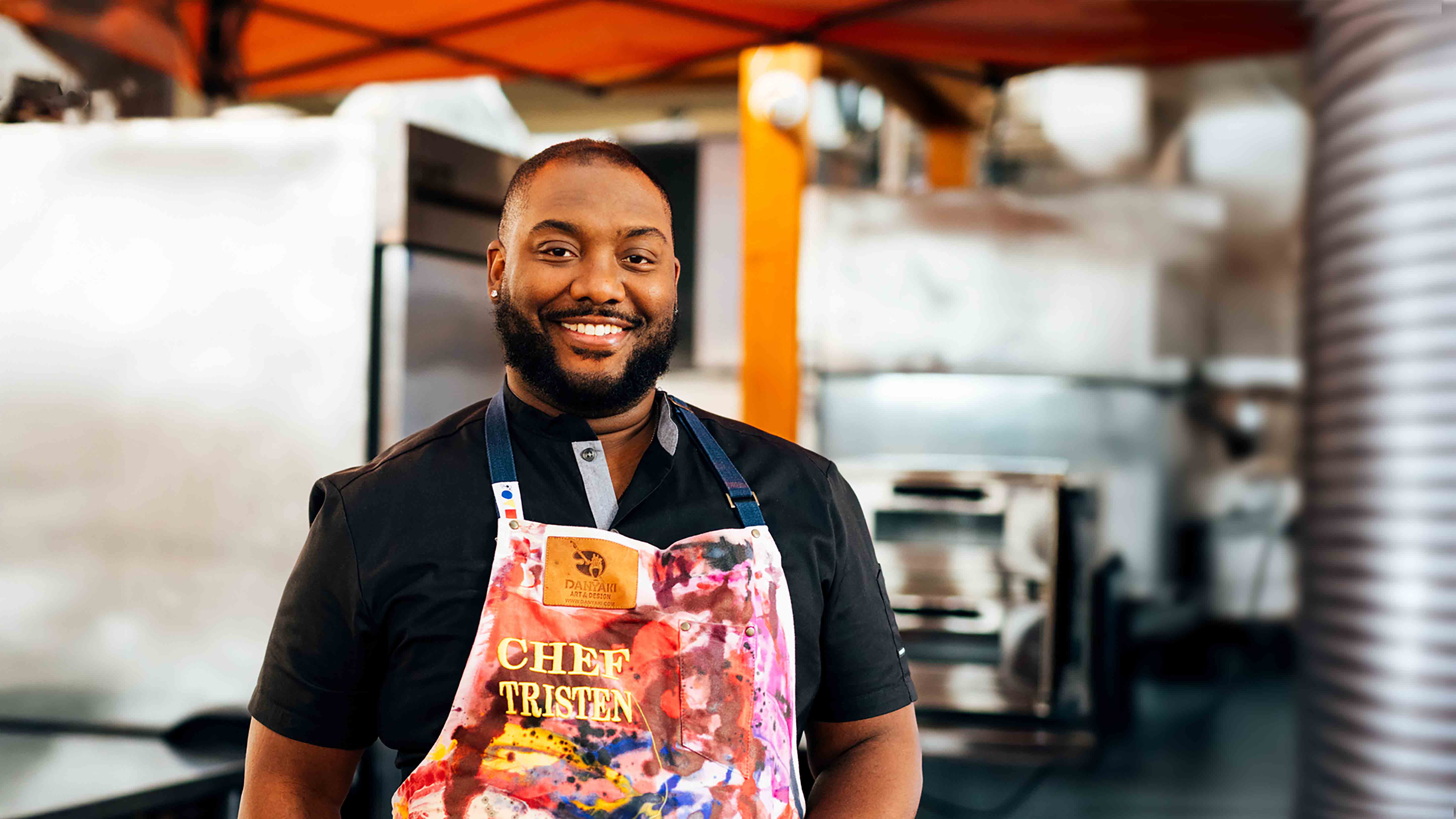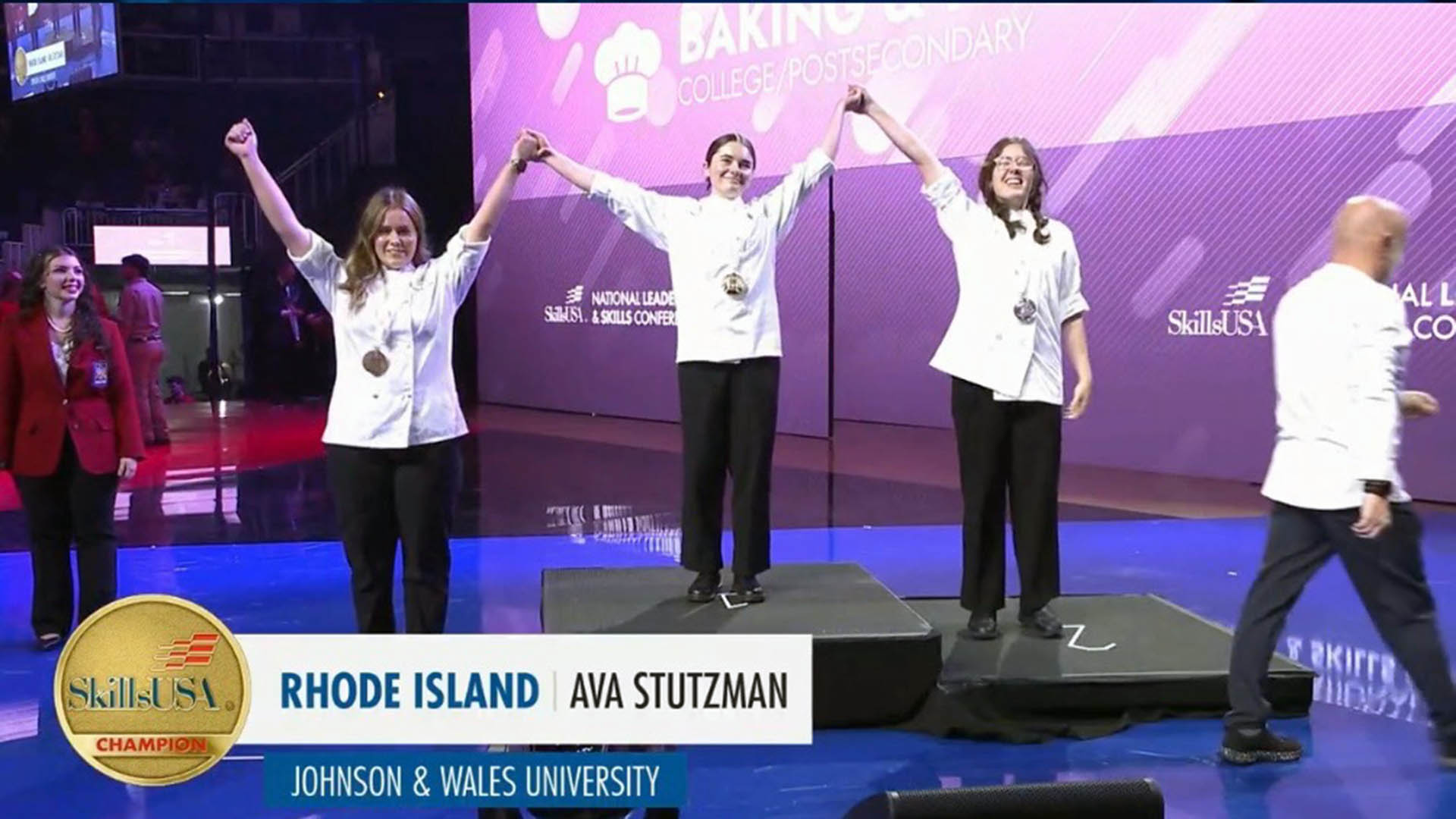Destination Japan: A Trip to Noma’s Kyoto Residency
Summer is a perfect opportunity for JWU professors to travel, learn, absorb new techniques, and refine their palates — and what better place to do all those things than Japan?
When Noma announced that the Copenhagen-based restaurant would be pulling up stakes and popping up at the Ace Hotel Kyoto for a 10-week residency starting in March 2023, four JWU Providence CFIT faculty members — Assistant Professor Matthew Britt, Assistant Professor Renée Gemmer, Associate Professor Lynn Tripp, and Associate Instructor Wyatt Maguire — acted quickly to secure reservations.
Eating at Noma — or at a Noma pop-up — is one of those bucket list experiences coveted by foodies and non-food obsessives alike. In Kyoto, the entire Noma team immersed themselves deeply in Japanese techniques, flavors, and methods with thoughtful precision; it’s staggering how quickly they fully recalibrated to create an entirely new menu in an unfamiliar place.
When Matt Britt asked Noma Projects creative director Thomas Frebel about the restaurant’s affinity for Japan (this is the second Noma pop-up), Frebel replied, “How do you explain what Noma is to a Japanese person who has no idea? Kaiseki* cuisine is a reflection of time and place — meaning that the kaiseki restaurant changes its menu probably 4-12 times throughout the year, depending on how quickly the seasons change — and really trying to reflect the moment of nature on a plate. … In my opinion, Noma is the non-Japanese version of a modern kaiseki. It’s the utmost seasonal restaurant.” (You can listen to the entirety of their conversation on the Culinary Now podcast.)
While Noma was the trip’s centerpiece, the rest of the time in Japan was just as exciting.
The JWU crew focused on eating a diverse array of foods, from complex multi-course dinners (Noma, Monk) to small bites and informal snacks found on the fly. (They also visited some of the region’s top bars, including Bar Penguin and L’Escamoteur.) And they tried to explore as much cultural ground as possible in Kyoto and, briefly, Tokyo.
Below, Matt Britt and Renee Gemmer share their impressions of Japan and their advice for JWU students who might want to visit one of the world’s most incredible food and hospitality regions.
What were your first impressions of Japan?
Gemmer: I had not been to Japan before and was thrilled to have the opportunity to experience a new country and culture going into this trip.
My impression of Japan from our first moments on the ground was how clean and pristine everything was. You can tell that there is a unified sense of pride in the Japanese people because of the care and professionalism present in the everyday experiences you have while there. They care for public spaces as their own and are respectful of the natural beauty around them. Amongst modern buildings are preserved temples. Tradition and history are honored alongside the new and evolving. Everyone we met was also very polite and kind, helping us through situations in the train stations and assisting us in making purchases, which could be challenging because of the language barrier.
Britt: Focus! Leading up to the trip, I had read a lot about how those living in Japan value their culture and respect their place. Almost everyone (if not everyone) we interacted with had a sense of purpose in life. This came through in the way they completed their job, traveled the city, and interacted with those from another country.
“Six days in Japan is not enough to truly experience it all. You need six months, easy. Because our time was limited, we pushed ourselves to taste as much as possible.”
Tell us about the Noma experience:
Gemmer: The Noma meal was unique and like no other experience I have ever had at a restaurant before. Like so many others, our group had traveled across the globe to see what a world-renowned restaurant and team would create in Japan with local ingredients and expertise.
For me, the attention to detail throughout the entirety of the service is what sets a meal like this one apart. The effortlessly intentional components of the decor, food, beverage pairings, hospitality and knowledge of the staff were delivered to every guest so naturally. It is the cohesiveness of all of these components that makes the Noma team one of the greatest in the world.
The team chose Japan and has found inspiration for their creations in Japanese cuisine, ingredients, nature, history, traditions and art, which starts with learning, connection, and incorporation of all of these items throughout the dining experience.
As an example, all of the service wares that we used throughout the meal (glassware, flatware, plates, etc.) were created by more than 30 different craftspeople and artists from around Japan. Every moment of the meal was filled with intrigue and awe at what they had created and were delivering to the table.
BELOW: SCENES FROM THE NOMA KYOTO TABLE.
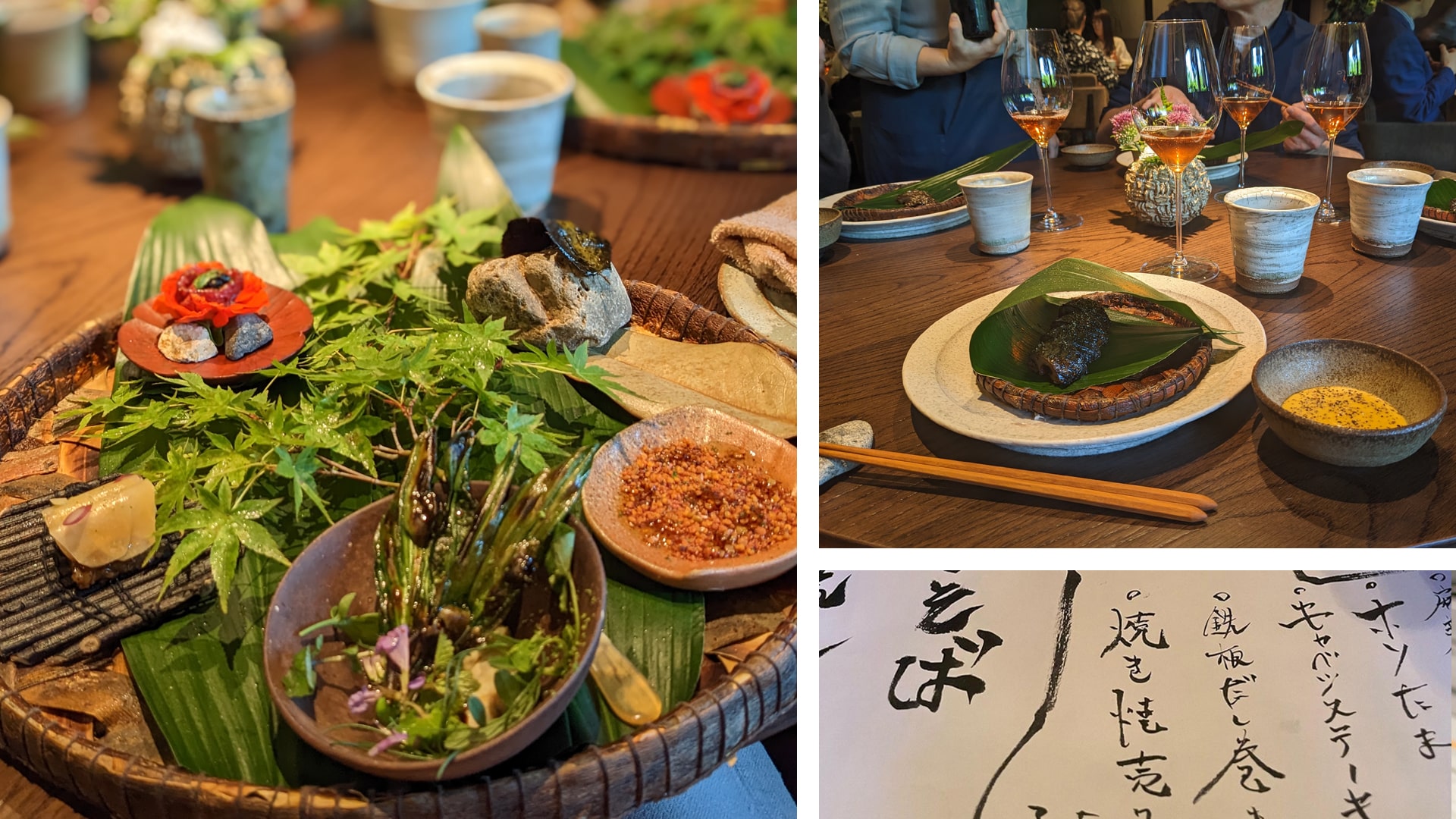
Britt: This question came up during my podcast interview with Thomas Frebel: “Why is Noma here?”
Japan is home to kaiseki cuisine, which is likely the origin of the modern tasting menu. Noma, while connected to Scandinavia, is more about respecting and elevating the ingredients during a particular time and place.
Typically, this is in Copenhagen, but they also have done pop-ups in Mexico, Australia, and now two in Japan.
I’ve been fortunate enough to dine at Noma twice now, and I can say that each experience is truly unique. Connecting the 2018 vegetable season menu with the 2023 Kyoto menu is difficult. They shared the same attention to detail and respect for ingredients, but the flavor profiles could not have been more different.
What was the best bite of food you ate during your trip? Yes, you’ve got to pick one incredible bite — what flavor, method, or gorgeous presentation stayed with you the most?
Britt: The best bite for me was the swordfish belly [at Noma]. I’ve grown up eating swordfish on the grill, but this dish was better than any swordfish I’ve had before. It was delicate, had perfect texture, and the sauce made from kelp was the ideal complement — it was rich and paired perfectly with the fatty yet delicate fish.
Other favorites would be the mountain vegetables made with a sauce from the brain of the spiny lobster; the shabu shabu with various seaweeds; or the miso flatbread with raw shrimp and ants.
It was tough to compare the Noma meal with others during the trip. I imagine anyone on the Noma team would say they are not trying to be better than other dining experiences in Kyoto or Japan but are doing their best to pay homage to Japan’s amazing ingredients while staying true to their core principles.
Gemmer: This is such a tricky question! If I had to pick the best bite of food I ate, it would be the third course we were brought at Noma. It consisted of two separate plates: the cuttlefish and whisky vinegar and the shiro ebi and miso crisp. I really enjoyed this course for the presentation and natural flavors of the ingredients.
The cuttlefish was raw, sliced impeccably thin, marinated in whiskey vinegar, sprinkled with spices, and brought out on a large ice cube, settled amongst rocks.
The miso crisp was layered intricately with shiro ebi (raw baby white shrimp), peach gelée, and ants. I loved the flavor of the shiro ebi the most. It was delicately sweet. And between the crispiness of the cracker and added flavor and texture of the gelée, it made it a perfect bite for me.
I enjoy trying new ingredients, and this trip was full of them, but the cuttlefish and the shiro ebi were delicious and intriguingly presented. The addition of the ants also made it a dish I’ll never forget.
Britt: Six days in Japan is not enough to truly experience it all. You need six months, easy. Because our time was limited, we pushed ourselves to taste as much as possible, which included eating late or early depending how you look at it. A late-night bowl of umami-packed noodles paired with an ice cold Sapporo was by far one of the best bites all trip.
BELOW: SMALL BITES FROM THE TRIP.

Japan is a country that is obsessed with the importance of small details. What are some ways that Japanese hospitality differs from American?
Gemmer: Japanese hospitality differs from that in America because of their dedication to a specific individual craft. Any work performed was presented intentionally, with the goal of quality and integrity of the product, no matter the job. Taking pride in their work in Japan has been built into their culture for centuries.
We went to a bar called Bar Penguin in Tokyo. The owner, bartender, server, and sole staff member at this bar had trained for almost a decade at Bar Radio, an acclaimed bar in Tokyo, before opening his own bar, which was similar to Juu-go** — very small, with only 8 seats. All of his glassware was hand-acquired antiques; he infused his own liquors, carved the ice cubes to order; and was excited to share his knowledge and twists on classic cocktails that he would make with the inspiration of Japanese ingredients and spirits. The beverages and experience were exquisite because of his attention to the small details and expertise he has gained over the years working at his craft.
Monk was also very similar in this way. If you have yet to watch the Netflix episode of “Chef’s Table Pizza” where Chef Yoshihiro Imai is featured, you should! The dining experience was just as magical as they depicted it, showcasing many of the cultural influences that make his food so special and unique.
Britt: Cleanliness. Not to talk trash about American cities (I love them!), but I would eat off the streets in Tokyo’s Ginza neighborhood.
This also makes its way into food. Everyone is meticulous about maintaining a certain level of quality and cleanliness. We also noticed several times that restaurants would turn diners away who didn’t make a reservation. I recall a fantastic restaurant called Juu-go that serves hand-made soba noodles (that’s it!) The place is small — roughly eight seats —and our party of four had reserved time at 3pm to dine.
“Japan is a must-see destination; add it to your list of places to go if it is not there already. Stay for two weeks (or longer if possible) to immerse yourself in the food, history and culture.”
During our experience, others walked in, but the chef/server/owner kindly explained that they had not reserved a time, so he could not serve them. I asked him why he turned them away, citing the open seats and that we squeeze in as many covers as possible in America to maximize profit. His response made me feel somewhat foolish, but he grows all his own buckwheat to prepare the noodles. He only sourced and prepared enough for those who reserved a space. He noted that he could grind additional servings to accommodate the extra guests, but the quality would be impacted. That’s inspiring!
What is the biggest lesson you will bring back with you into your classrooms?
Britt: We are starting to put together a plan to share this experience in the most impactful way with our students and colleagues. The most important takeaway for me is the attention to detail. Everyone on the Noma team had a personal connection to each dish, perhaps because they spent hours sourcing and preparing each item. It’s a small detail, but when I took my seat at Noma, the server noticed I was left-handed and seamlessly repositioned my chopsticks. You can find service details like this outside Japan, but that thoughtfulness stuck with me.
Gemmer: Some of the lessons that I will be taking back and will continue to expand upon in the classroom, as it is already one of our core principles, is the standard of professionalism. On the plane, in restaurants, out shopping, and just walking down the street, we experienced the overall pride the Japanese take in their work. They presented themselves in a way that exuded respect for themselves and others around them. The attention to detail that Chef Britt mentioned goes hand in hand with delivering these experiences to guests professionally and thoughtfully.
What is your advice to students who might want to visit Japan?
Britt: Be respectful! This goes for traveling to any country but remember you are in someone else’s home. Doing research on certain cultural traditions (when to bow, etc.) or learning certain phrases to help communicate or show appreciation is key. Also, be open-minded. In the West, we are obsessed with texture (crunchy) but if you are not willing to try something that scares you or is unfamiliar (think soft textures or even bugs), then you might miss out on something amazing.
Gemmer: Japan is a must-see destination; add it to your list of places to go if it is not there already.
Stay for two weeks (or longer if possible) to immerse yourself in the food, history, and culture. Traveling around the country by train is efficient and affordable, so try to make a few stops in different cities.
To prepare, do your research so you can make reservations for restaurants or tours. Plan to educate yourself while you are there, too.
We did a sake brewery tour and tasting in Kyoto that was amazing and not something we’re easily able to experience here in the United States. Talk to the locals that are serving you. Being politely inquisitive about their lives and interests often leads to discovering or exploring something new you had not intended. (Like the best late-night ramen stop in town!) Make plans but also leave time to be flexible and spontaneous.
When I travel, I pin and save accommodations or places of interest that I plan to visit on Google Maps to make navigating a new city more accessible. Looking at maps helps me get acquainted with a city before even stepping foot in it.
Lastly, it took me almost five full days to adjust to the difference when I arrived (which is also why I would recommend a longer stay in further to reach destinations). Afternoons were the hardest to push through, and I did need a quick power nap for a few days. I never want to miss out on anything when I travel, so I didn’t mind getting less sleep than usual. It is important to always get the most out of each day!
*Wikipedia defines kaiseki or kaiseki-ryōri as “a traditional multi-course Japanese dinner. The term also refers to the collection of skills and techniques that allow the preparation of such meals and is analogous to Western haute cuisine.”
**Juu-Go is a Michelin-starred restaurant in Kyoto that specializes in soba. The chef-owner, Akiya Ishibashi, makes two types of soba, juwari soba and sobagaki, by hand from locally-sourced wheat.
BELOW: SNAPSHOTS FROM JAPAN, TOP-BOTTOM: GROUP SHOT; NOMA KYOTO INTERIOR & THE BUSTLING KITCHEN; KYOTO’S WATERWAYS; AND A VISIT TO RESTAURANT MONK. PHOTOS BY MATT BRITT AND RENEE GEMMER.
